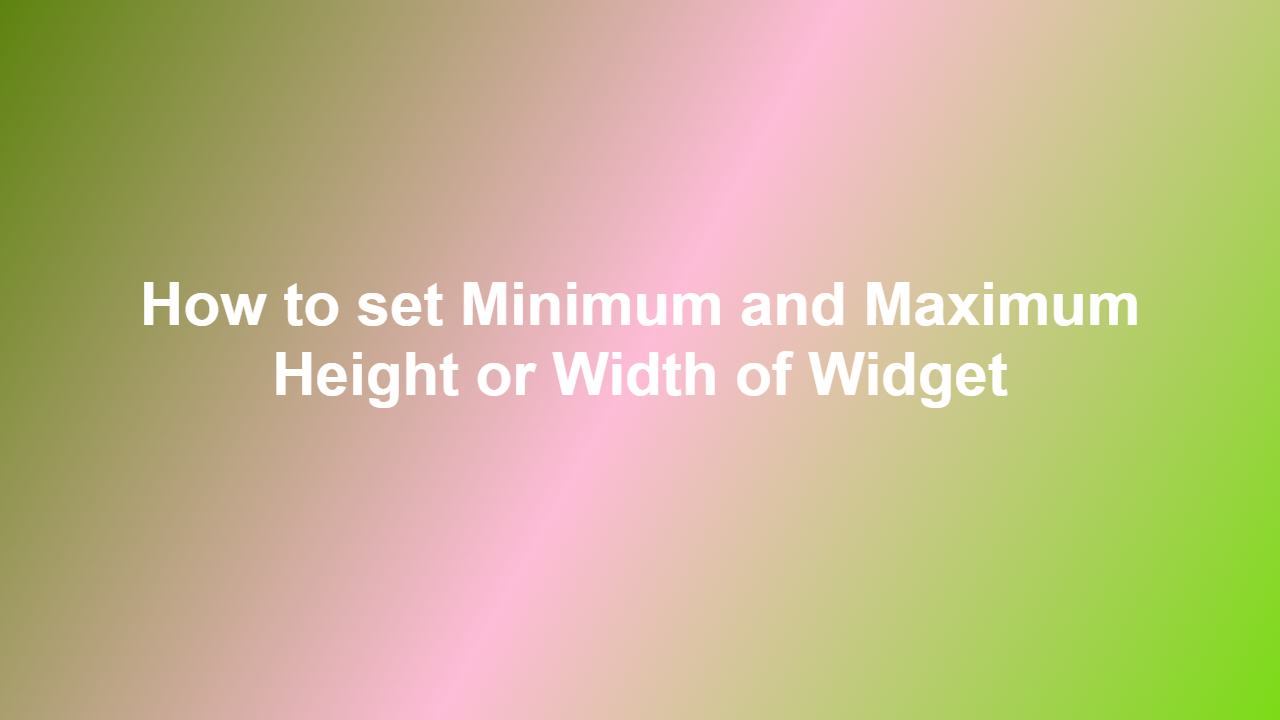How to set Minimum and Maximum Height or Width of Widget
Introduction
Widget is an essential element in web design, and controlling its size is crucial for a visually appealing and user-friendly interface. Setting minimum and maximum height or width of a widget ensures that it adapts to different screen sizes and devices while maintaining its functionality. In this article, we will discuss how to set minimum and maximum height or width of a widget using CSS.
Understanding Minimum and Maximum Height
The `min-height` and `max-height` properties in CSS are used to set the minimum and maximum height of an element, respectively. These properties can be used to control the height of a widget, ensuring that it does not become too small or too large.
Understanding Minimum and Maximum Width
Similarly, the `min-width` and `max-width` properties are used to set the minimum and maximum width of an element. These properties can be used to control the width of a widget, ensuring that it does not become too narrow or too wide.
Setting Minimum and Maximum Height or Width using CSS
To set the minimum and maximum height or width of a widget, you can use the following CSS code:
“`css
.widget {
min-height: 200px;
max-height: 500px;
min-width: 300px;
max-width: 800px;
}
“`
In this example, the widget will have a minimum height of 200px and a maximum height of 500px. Similarly, it will have a minimum width of 300px and a maximum width of 800px.
Using Media Queries to Set Minimum and Maximum Height or Width
Media queries can be used to set different minimum and maximum heights or widths for different screen sizes. For example:
“`css
@media only screen and (max-width: 768px) {
.widget {
min-height: 100px;
max-height: 300px;
min-width: 200px;
max-width: 400px;
}
}
“`
In this example, the widget will have a minimum height of 100px and a maximum height of 300px on screens with a maximum width of 768px.
Conclusion
Setting minimum and maximum height or width of a widget is essential for creating a responsive and user-friendly interface. By using CSS properties such as `min-height`, `max-height`, `min-width`, and `max-width`, you can control the size of a widget and ensure that it adapts to different screen sizes and devices.
FAQ
1. What is the purpose of setting minimum and maximum height or width of a widget?
The purpose of setting minimum and maximum height or width of a widget is to ensure that it adapts to different screen sizes and devices while maintaining its functionality.
2. How do I set minimum and maximum height or width of a widget using CSS?
You can set minimum and maximum height or width of a widget using the `min-height`, `max-height`, `min-width`, and `max-width` properties in CSS.
3. Can I use media queries to set different minimum and maximum heights or widths for different screen sizes?
Yes, you can use media queries to set different minimum and maximum heights or widths for different screen sizes.
4. What is the difference between `min-height` and `max-height` properties?
The `min-height` property sets the minimum height of an element, while the `max-height` property sets the maximum height of an element.
5. Can I set minimum and maximum height or width of a widget using JavaScript?
Yes, you can set minimum and maximum height or width of a widget using JavaScript, but it is recommended to use CSS for better performance and responsiveness.
